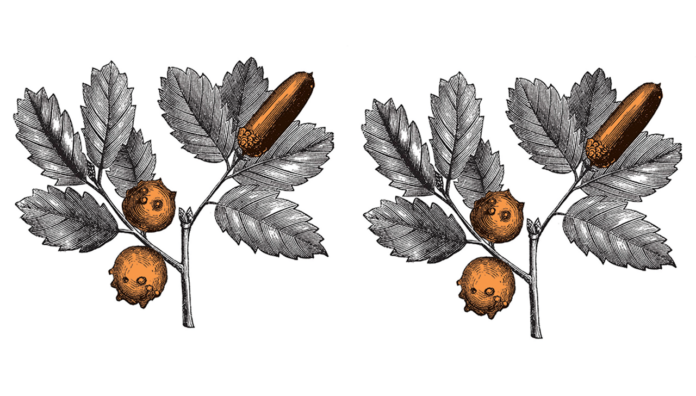From tanning ancient Egyptians to treating burns during World War 1, the use of tannic acid has evolved.
In 1925, Edward C. Davidson was a surgeon at Henry Ford Hospital, Detroit. That year, he published a paper in Surgery, Gynecology and Obstetrics that made tannic acid the go-to treatment for burns. He argued it helped prevent toxic substances from burnt skin being absorbed and causing dangerous systemic reactions.1–3
During World War I, tannic acid dressings had indeed proved successful in treating burns from mustard gas and lewisite. By the 1940s, however, tannic acid and Davidson were controversial. Even his successors at Henry Ford Hospital pushed for the ‘abandonment of the treatment of burns by this and related methods’.1,3,4
Why? Tannic acid appeared to damage the liver. But new research suggests high concentrations of poor-quality tannic acid and limited understanding of the pathophysiology of burns triggered much of the hepatoxicity. While research doors are opening to new applications, tannic acid is seldom used for burns.1,3,9
What is tannic acid?
One thing tannic acid isn’t is tannin. That’s a term used for a group of organic compounds, including gallotannin. Tannic acid is a type of gallotannin. It’s a large, naturally occurring, weakly acidic plant polyphenol (C76H52O46).6–8,10
The compound is found in nutgalls, the hard swellings formed on trees infested by insects. Traditionally, it’s extracted from nutgalls on the bark of Quercus oak species. Nutgall is ground into a powder, then mixed with water and/or alcohol and ether. The liquids evaporate, leaving tannic acid behind.5,6,11
The story begins
Tannic acid has been used for millennia for medical and non-medical applications. The word tannin comes from the old German for oak, tanna. And because the ancient Egyptians, Greeks and Romans used the compound in the tanning process, converting hides into leather,
the name tannic acid emerged.12,13
In the late 19th and early 20th centuries, medical uses of tannic acid proliferated. Combined with charcoal and magnesium oxide, for instance, tannic acid was used as an antidote against different poisons, including strychnine and ptomaine. The idea was
to ‘soak up’ the poisons.1,5,15
The compound was also used to treat diarrhoea and unspecified rectal disorders, along with pharyngitis, haemorrhoids, and skin eruptions. Add tonsillitis and mouth and throat cancers, and by 1950s the compound was popular despite the burns dispute.6,8
Uses today
Although evidence of effectiveness is limited, tannic acid is used topically for many conditions: diaper rash, fever blisters, poison ivy and cold sores, for which it’s the active ingredient in Zilactin ointment. It’s also taken by mouth for bleeding, diarrhoea, dysentery, bloody urine and cough.5,7,15
What it does
Very simply, tannic acid has an astringent effect. When taken by mouth, it reduces toxic secretions. When applied topically, it forms a protective layer of hardened cells.7
There is promising data that tannic acid reduces inflammation and acts as an antibiotic. It may even fight cancer and treat type 2 diabetes.9,14
Edward C. Davidson would no doubt approve.
References
- de Maquinarias V. The use of tannic acid in the local treatment of burn wounds: intriguing old and new perspectives. Wounds 2001;13(4):144–58.
- Davidson EC. Tannic acid in the treatment of burns. Surg Gynecol Obstet 1925;41:202–21.
- ChokothoL, van Hasselt E. The use of tannins in the local treatment of burn wounds – a pilot study. Malawi Med J 2005;17(1):19–20.
- McClure RD, Lam CR, Romence H. Tannic acid and the treatment of burns: an obsequy Annals of Surgery 1944:387–98.
- Pećanac M, Janjić Z, Komarcević A, et al. Burns treatment in ancient times. Med Pregl 2013;66(5–6):263–7.
- The Editors of Encyclopaedia Britannica. Tannin. Encyclopedia Britannica 2021.
- DRUGBANK online. Tannic acid.
- Robles H. Tannic acid. Encyclopedia of Toxicology (Third Edition)
- Baldwin A, Booth BW. Biomedical applications of tannic acid. J Biomater Appl 2022;36(8):1503–23.
- What is the difference between tannin and tannic acid. PEDIAA 2020.
- com. Chemical Compounds. Tannic Acid. 2022.
- United States Department of Agriculture. US Forrest Service. Tannins.
- Pećanac M, Janjić Z, Komarcević A, et al. Burns treatment in ancient times. Med Pregl 2013;66(5-6):263–7.
- Pregasen M. Tannic Acid: Friend or Foe? 2013.
- Tannic Acid. 2021.



 John Jones MPS, pharmacist immuniser and owner of My Community Pharmacy Shortland in Newcastle, NSW[/caption]
John Jones MPS, pharmacist immuniser and owner of My Community Pharmacy Shortland in Newcastle, NSW[/caption]


 Debbie Rigby FPS explaining how to correctly use different inhaler devices[/caption]
Debbie Rigby FPS explaining how to correctly use different inhaler devices[/caption]




 Professor Sepehr Shakib[/caption]
Professor Sepehr Shakib[/caption]

 Lee McLennan MPS[/caption]
Lee McLennan MPS[/caption]
 Dr Natalie Soulsby FPS, Adv Prac Pharm[/caption]
Dr Natalie Soulsby FPS, Adv Prac Pharm[/caption]
 Joanne Gross MPS[/caption]
Joanne Gross MPS[/caption]





